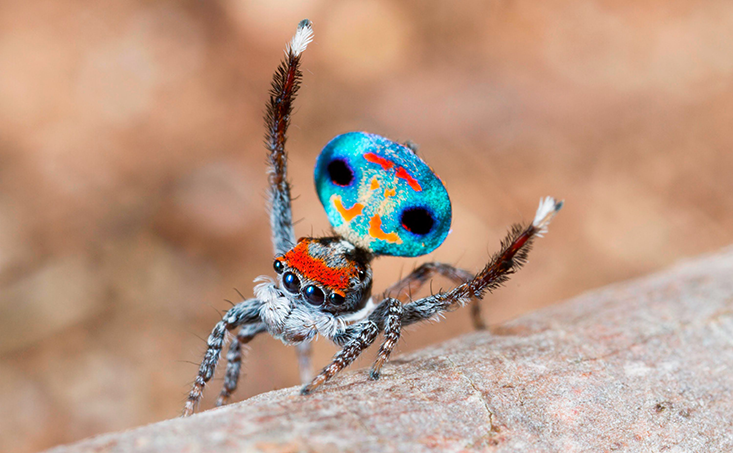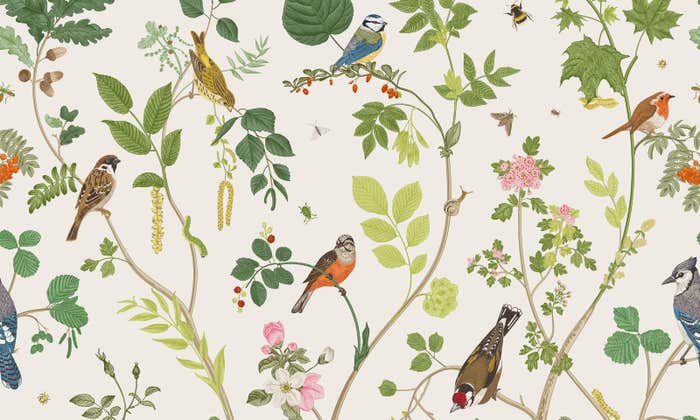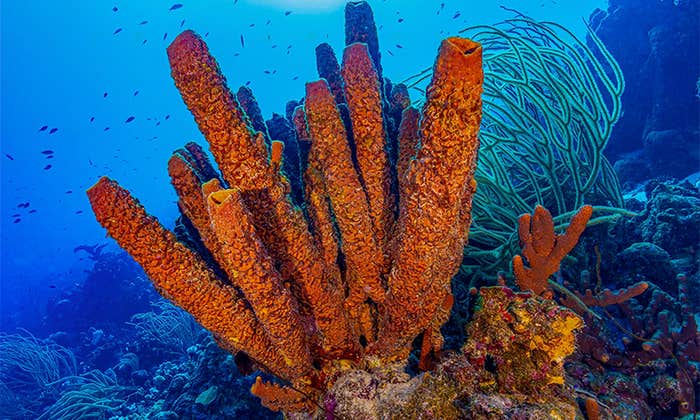Michael J. Ryan, a professor of zoology, didn’t call his forthcoming book, Everything You Always Wanted to Know About Frog Sex* (*But Were Afraid to Ask), but he sure could have. For 40 years, Ryan has studied the tiny tungara frog, mostly on the tropical Barro Colorado Island in Panama. The narrative of the tungara frog’s sex life, Ryan writes in A Taste for the Beautiful, the actual title of his forthcoming book, was uncovered, “during 186 consecutive nights of watching everything these frogs did from sundown to sunup—more than 1,000 of them, all individually marked so I could tell them apart, record the males’ voices, measure how often they mated, and figure out just what attracted females to a particular male.”
Ryan did indeed figure out what turned on the female frogs, a sexy call of whines and chucks. For Ryan, the frog’s seductive call opened a panoramic window on mating habits across the animal kingdom. Darwin had it right that evolution was served by sexual selection, Ryan says, once scientists, like himself, exposed the biological components, down to the genes, behind animals’ preferences for fanciful traits in potential mates, most famously, of course, the lush blue fan that is the peacock’s tail.
The brain is our most important sex organ, but it has lots of other things on its mind.
Today Ryan teaches at the University of Texas at Austin and is a senior research associate at the Smithsonian Tropical Research Institute in Panama. Decades of studying sexual selection have led him to develop a theory called sensory exploitation. “The key idea is simple: Features of the female’s brain that find certain notes of the males’ mating call attractive existed long before those attractive notes evolved,” he writes. A central aspect of his theory is animals harbor hidden sexual preferences that influence the evolution of sexual traits. In “The Mate Selection Trapdoor” in this week’s Nautilus, Ryan spells out the adaptive benefits of hidden preferences.
I recently caught up with Ryan for this month’s Ingenious interview to delve into his provocative thesis that males can show off their fancy colors and songs all they want, but it’s females who make the call.

You write that “females are the biological puppeteers, making the males sing exactly what their brains desire.” What do you mean?
The view has long been that males, in their sexual communication, are saying something important about themselves, and it’s up to the females to figure out what that is, to figure out which males are truly attractive and which are not. I argue the other side of the coin. Females aren’t trying to figure out what males are saying. When they mate with a male, by definition, that male is attractive. So females are the deciders. Over evolutionary time, it seems males are trying out a lot of different courtship traits. A bright orange here, a bright blue there, rub your wings together and make a sound, or jump up and do a dance. They are trying to do these things to tickle females’ preferences. But it’s really the females calling the shots. It’s the female’s brain that sets the bar for what kind of traits are attractive and unattractive.
Why did evolution make females the choosers? What would be the advantage of that?
Yeah, that’s a great question. First of all, there are always exceptions. There are some species, like ours, where males choose females. There’s a number of species where there’s mutual mate choice. But the common one is males courting and females choosing, and that’s because of the fact that females have fewer, larger gametes, and males have many small gametes. Females have a limitation on the number of eggs they can produce in a lifetime. So they want to choose mates very carefully, because they don’t want to waste this very valuable resource.
When female túngara frogs come to the pond at night and don’t get a male, they decide not to mate. So all of her eggs just flow out of her body into the water. Now she has to wait another six weeks to choose. For males, on the other hand, there’s not any realistic limitation on the number of sperm they can produce. When males ejaculate, it doesn’t take them a lot of time to fill up another set of ejaculates, so the males could potentially mate with many more individuals than the females could mate with. Therefore it’s males competing for a much more limited resource than females.
You need to survive to reproduce. Roadkill doesn’t mate.
Animals have developed “a taste for the beautiful,” you tell us. “Beautiful” is such a subjective term. What do you mean by it?
It’s a quote from Darwin. [In The Descent of Man, Darwin writes, “With the great majority of animals, however, the taste for the beautiful is confined, as far as we can judge, to the attractions of the opposite sex.”] Beauty is what the females decide beauty is, right? Beauty is what the brain reacts to in a positively sexual way. Darwin suggested females have an aesthetic preference. He couldn’t figure out why. But he said that they must have an aesthetic preference that favors the evolution of these beautiful traits. It’s really interesting, too, that the things that female animals find beautiful, not all the time, but in many cases, coincide with what we find beautiful. When we look at canaries with their birdsongs, and guppies with their bright colors, and subject them to artificial selection for the pet trade, we get individuals very much like the ones that female animals go crazy over.
Wasn’t Darwin frustrated because he couldn’t reconcile the attractiveness of the male peacock tail to the fact it was cumbersome and made peacocks susceptible to predators?
Right. Have you ever seen a peacock run or fly? It’s pathetic. Dragging his tail behind him, he can’t outrun a child let alone a fox. This is what made Darwin say that every time he looked at a peacock feather it made him sick. These males would be healthier without long tails.
Beauty as a main force of evolution has been controversial. Evolution works by genes for individual traits—which enable fitness—being passed down through generations. A trait for beauty would seem secondary.
There’s two components of Darwinian fitness that are important. One is survivorship, and one is reproduction. The way you get genes across to the next generation is by making offspring. You need to survive to reproduce. Roadkill doesn’t mate. So you have natural selection and sexual selection favoring different sets of traits. Sometimes these selection forces are in opposition. But as long as there is a genetic component to traits that make some animals reproduce more, you’re going to get changes in these traits across generations. As with traits for survival, when sexual beauty has a genetic basis, it is passed down from generation to generation as males evolve more seductive ornaments.
Have you identified a genetic basis to beauty or aesthetic preference?
Yes, absolutely, there is a genetic, neural basis for this taste for the beautiful. In the túngara frog, I can take a pin and show you right in the frog’s brain where this arises.

You say animals, including us, have a preference for similar aesthetic qualities. You also say beauty is in the brain of the beholder. How do you square those two statements?
Well, there are idiosyncrasies, for sure, with females. With bowerbirds, females are attracted by all of the ornaments the male displays around the bower. What scientists have shown is that younger females seem to be more swayed by the decorations of the bower than they are by the males themselves. And older females are more impressed by the display of the male than the decorations of the bower. Scientists have shown, in swordtail fishes, that the preference for the male’s sword seems to change with the age of the female, or the size of the female.
What are we to take away from these preferences?
That these things can change with experience. What scientists think happens with bowerbirds, for instance, is when the male is displaying to the female, it’s an aggressive display, and the younger females seem to be scared off by it. Whereas the older females that have seen this display, mating season after mating season, learn that it’s not an aggressive display.
In A Taste for the Beautiful, you refer to a country song by Mickey Gilley, “Don’t the Girls All Get Prettier at Closing Time,” to amplify that point. What is closing time in the perspective of evolutionary biology?
The point is that preferences can be fickle, they’re not fixed, there’s variation. Not only among individuals, but within individuals, and one of the things that makes these preferences fickle, that causes them to change, is this closing-time phenomenon. In many cases, animals will have a taste for the beautiful, but if there’s nothing there matching that taste for the beautiful very well, they’re willing to change their criteria to lower their threshold, or like in this Mickey Gilley song, to go home with a one instead of a 10.
So does the evolutionary biologist conclude that fickleness is natural?
Yes, for sure, it varies with the hormonal state.
What has studying the túngara frog and its mating habits for 40 years taught you about humans?
It’s taught me it’s hard to know why women prefer certain traits in males. The brain is our most important sex organ, but it has lots of other things on its mind. So it leads you to wonder how the life experiences of women, with things that have nothing to do with sexual beauty, influence what they find as attractive? This isn’t surprising. I’m an academic, so the kinds of folks that I run into in my job have respect for creativity, intelligence, and being articulate. Things that would make a male attractive in this social scenario probably might not add to a male’s attractiveness in other kinds of scenarios.
Is it dangerous, then, to leap from animals to humans in talking about sexual selection?
I think it’s difficult to make that leap if you’re looking for biology to give you a description of exactly what we would deem attractive. But I do think evolutionary studies of animals translate well to some general patterns. Females are influenced by the resources that males have available, whereas males seem to be much more attentive to a female’s physical characteristics, including their age. This is one of the explanations for why, on average, with tons of exceptions, men tend to be a little bit older than the women that they marry. Males have had time to demonstrate their ability to garner resources.
You write that humans, with our candles and music, poems and flowers, share elaborate courtship rituals with animals, like bowerbirds. Ever thought about how our rituals have changed in the social media age, when we can fake sexual traits?
I have thought about it, and it’s really interesting. When people describe themselves online, they are not telling the truth in a lot of cases. So they’re describing themselves in a way that they think others will find attractive. It’s like a peacock being able to will what its tail looks like, or a canary being able to will what its song sounds like, and then asking how close did they get to what the females really want. I haven’t done any studies like that, but it would be really interesting to get to those online data, and ask those kinds of questions.
Does it undermine the theory of sexual selection that humans have such a wide variety of aesthetic and personal preferences?
I don’t think it undermines sexual selection. We too have two different sexes, with different gamete numbers. That puts us in a situation where biology facilitates all kinds of cultural selection, cultural differences. So the way I think of it is: Biology forms the basis of how humans behave, the basics in terms of mate choice. But culture plays a much stronger role in shaping how we choose, how we act, and how we adorn ourselves.
What would you be if you weren’t a scientist?
I went to college to become a high school biology teacher. I had a little taste of that and I loved it. I’m sure that’s what I would’ve done had I not become a scientist.


























